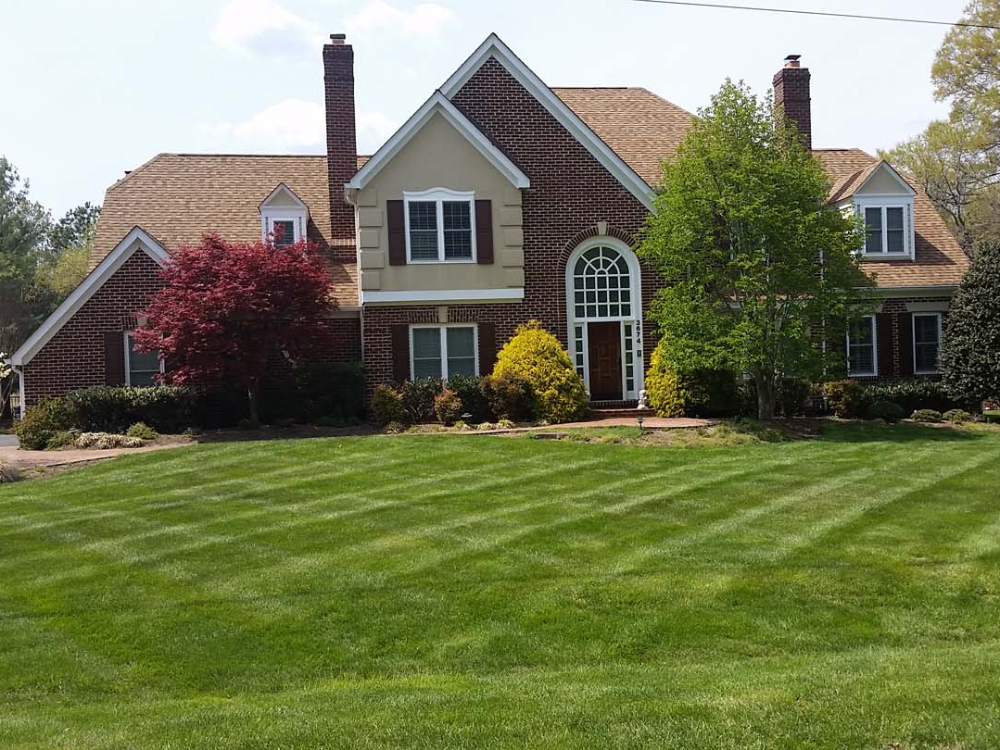Change Your Outside Area: Landscaping San Marcos Experts
Change Your Outside Area: Landscaping San Marcos Experts
Blog Article
Expert Landscape Design Solutions for Sustainable Outdoor Improvement
Enhancing outdoor rooms via professional landscape design solutions can supply more than simply aesthetic charm; it can cultivate a sustainable atmosphere that benefits both homeowner and the earth. From selecting native plants to implementing water preservation techniques and using green hardscape options, the opportunities for sustainable outdoor change are substantial. By recognizing the importance of maintenance methods that sustain sustainability, specialist landscaping companies can really make a long lasting effect on the exterior rooms they deal with.
Benefits of Lasting Landscape Design
Lasting landscape design gives numerous environmental and economic benefits for both residential property proprietors and the neighborhood. By executing lasting practices such as xeriscaping, using native plants, and lessening water use, homeowner can dramatically lower their ecological impact. These methods not only save water yet likewise advertise biodiversity and minimize the demand for harmful pesticides and plant foods.

From a community perspective, lasting landscape design plays an essential duty in boosting air and water quality, minimizing metropolitan warm island impacts, and offering environments for local wildlife. These benefits add to producing much healthier and extra lasting atmospheres for everybody to take pleasure in.
Native Plants Choice and Design
When preparing a landscape design, choosing indigenous plants is essential for enhancing sustainability and ecosystem wellness. Indigenous plants are adapted to the local environment, dirt conditions, and insects, making them low-maintenance and much more resilient to thrive in their native environment. Incorporating native plants into landscape design creates not only boosts biodiversity but likewise sustains pollinators, helpful pests, and regional wildlife.
Designing with indigenous plants involves mindful consideration of variables such as plant dimension, growth habit, blossom time, and water demands to produce a lasting and visually appealing landscape. By picking a diverse selection of indigenous plants, landscape designers can create well balanced communities that bring in a range of varieties and add to the total wellness of the atmosphere.
Moreover, native plants can help in reducing water intake, decrease the demand for chemical pesticides and fertilizers, and enhance dirt high quality via their all-natural processes. With appropriate choice and style, indigenous plants can transform exterior rooms right into thriving, sustainable landscapes that benefit both the atmosphere and the neighborhood.
Water Conservation Techniques
Integrating indigenous plants into landscaping makes not just enhances biodiversity yet likewise supports pollinators, useful insects, and regional wild animals, which highlights the importance of executing water preservation methods in landscape design practices. Water preservation is important for sustainable outdoor rooms, especially in areas susceptible to dry spell or water shortage. One read reliable method is using drip irrigation systems, which supply water straight to the plant's origin area, reducing evaporation and runoff. Mulching is one more important method that assists maintain soil wetness, reduces weed development, and boosts dirt wellness.

Eco-Friendly Hardscape Solutions
The utilization of environmentally mindful materials in hardscape design is a crucial aspect of producing lasting outside rooms. Eco-friendly hardscape remedies incorporate a variety of methods aimed at reducing environmental effect while boosting the aesthetics and performance of outdoor locations. Including products such as absorptive pavers, recovered wood, recycled plastics, and natural rock can considerably reduce the eco-friendly footprint of hardscape installments.
Permeable pavers, for circumstances, enable rainwater to leak into the ground, minimizing drainage and protecting against water pollution - Landscaping San Marcos. Recycled plastics can be transformed right into sturdy and low-maintenance hardscape aspects, providing a sustainable choice to conventional products.
Maintenance Practices for Sustainability
To promote the eco-friendly stability of green hardscape solutions, implementing tactical maintenance techniques is essential for making certain lasting sustainability in outdoor landscaping projects. Routine maintenance not just preserves the aesthetic charm of the landscape but additionally adds to its overall sustainability by minimizing environmental effect.
One key upkeep practice for sustainability is proper watering administration. Effective sprinkling methods, such as drip watering systems or rainwater harvesting, aid conserve water and advertise plant health and wellness. In addition, routine assessment and adjustment of watering systems Home Page can protect against water wastefulness and make sure ideal hydration for plants.
An additional critical element of sustainable maintenance is the responsible use plant foods and pesticides. Selecting natural plant foods and using integrated bug administration methods minimizes harmful chemical drainage into the setting, protecting both plant and environment equilibrium.
Moreover, normal cleaning and maintenance of hardscape attributes like permeable pavers or stone paths stop particles buildup and maintain functionality while supporting water infiltration and water drainage, thus decreasing the threat of erosion and flooding. Landscaping San Marcos. By adhering to these sustainable upkeep techniques, outside landscapes can grow sympathetically while reducing their ecological impact
Conclusion
Finally, lasting landscaping supplies countless Clicking Here benefits through the usage of native plants, water conservation techniques, green hardscape remedies, and sustainable maintenance methods. By implementing these methods, outside areas can be transformed right into environmentally-friendly and cosmetically pleasing locations that sustain biodiversity and minimize environmental influence. Investing in specialist landscape design solutions that prioritize sustainability can bring about long-term benefits for both the setting and building proprietors.
From choosing indigenous plants to carrying out water conservation methods and making use of eco-friendly hardscape remedies, the opportunities for sustainable outside change are vast. By implementing sustainable practices such as xeriscaping, using native plants, and minimizing water usage, building owners can significantly minimize their environmental effect. Water conservation is critical for sustainable outdoor areas, especially in regions prone to drought or water scarcity. By applying these water preservation strategies, landscape design experts can develop lovely, sustainable outside areas that benefit both the environment and the neighborhood.
In verdict, sustainable landscape design uses various benefits via the use of native plants, water conservation techniques, eco-friendly hardscape remedies, and sustainable upkeep techniques.
Report this page